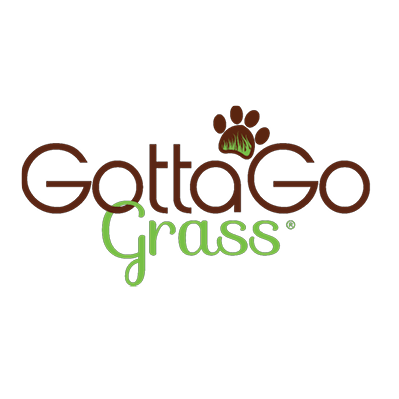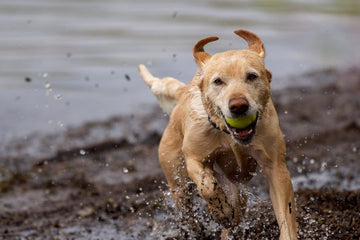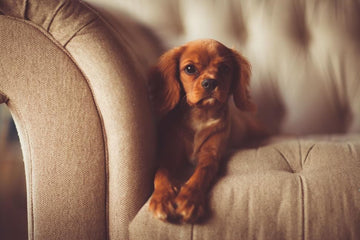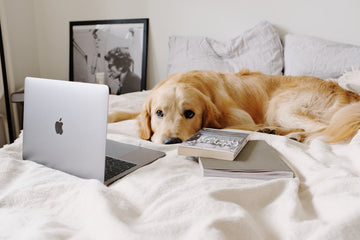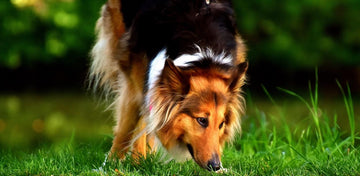
Fireworks are a traditional part of Fourth of July celebrations, lighting up the sky with vibrant colors and sound. But while we marvel at the spectacle, our dogs often feel quite the opposite. For many pets, the booming noise, flashing lights, and unpredictable bursts cause overwhelming stress.
It’s not just dogs near the fireworks display that are affected. Even if you’re not the one setting them off, the sound can travel for miles, triggering fear and panic in your pup. From frantic pacing and trembling to barking and hiding, dogs can show extreme distress in response to fireworks.
The best thing you can do for your dog on a loud holiday is to keep them indoors in a calm, controlled environment. With a bit of preparation and with help from tools like a dog grass pee pad, your pup can stay safe, clean, and comfortable through the night.
Why Fireworks Are So Distressing for Dogs
Unlike a thunderstorm, fireworks come without warning. They’re loud, sudden, and erratic—which makes them particularly triggering for dogs. The unexpected blasts can activate their fight-or-flight instinct, leaving them terrified and unsure how to react.
Part of the reason lies in dogs’ superior hearing. While humans can hear sounds up to about 20,000 Hz, dogs can detect frequencies as high as 60,000 Hz—three times our capacity. This heightened auditory sensitivity means fireworks aren’t just loud; they’re overwhelmingly intense for dogs, making escape feel impossible.
Common signs of distress include:
-
Whining or barking excessively
-
Trembling or shaking
-
Hiding under furniture
-
Pacing or trying to escape
-
Accidents in the house
Some dogs may freeze in place or become hyper-alert. Others experience more severe symptoms like excessive drooling, rapid heartbeat, gastrointestinal upset, or even panic-induced defecation. In fact, many dogs’ reactions resemble symptoms of post-traumatic stress, except they lack the cognitive ability to understand or process what’s happening, leading to even deeper fear.
And it’s not just the noise. Firecrackers and fireworks also release toxic particles that can linger in the air. Dogs with respiratory conditions like asthma may struggle even more during firework displays. If fireworks explode nearby, there’s also a risk of burns, eye injuries, or even ingestion of harmful residue.
It’s why bringing your pets indoors—at least temporarily—is the safest and kindest choice.

4th of July: How to Keep Your Dog Calm During Fireworks
Giving your dog a quiet, cozy area inside can make all the difference. Here’s how to make that space truly calming.
Absolutely! Here's a rewritten version of each point, with 1–2 explanatory paragraphs that dive into the why and how behind each strategy:
Set Up a Safe Zone
To help your dog cope with fireworks, set up a safe space in a quiet room away from windows and exterior walls where noise is more muffled. Block out visual triggers with blackout curtains and create a comforting environment using your dog’s bed, favorite toys, and familiar scents. Adding calming sounds like white noise or soft music can further reduce anxiety in dogs by masking the unpredictable noise outside.
Keep Them Busy and Distracted
Keeping your dog busy and mentally engaged is a great way to ease fireworks-related anxiety. Toys like a dog toy ball, puzzle feeders, or frozen treats filled with peanut butter offer calming stimulation through chewing and licking. Playing soft, dog-friendly music or turning on a pet-safe TV video can add comforting background noise that helps distract from the booms outside. These activities not only shift their focus but also create positive associations during what would otherwise be a stressful time.
Keep a Dog Grass Pee Pad Nearby
During fireworks, many dogs become too frightened to go outside, which can lead to indoor accidents and setbacks in house training. Providing an indoor potty option like a grass pee pad for dogs—such as Gotta Go Grass®—gives them a familiar, natural-feeling place to relieve themselves safely. These grass pads are especially helpful for dogs in apartments, seniors, or those experiencing extreme anxiety, as they help maintain their routine without adding more stress.
Helpful Tips to Calm an Anxious Dog
You don’t have to wait until fireworks begin to start helping your dog feel more secure—prevention and preparation go hand in hand. One of the most effective long-term strategies is proper socialization.
Dogs that are well-socialized at an early stage—exposed gently and positively to a variety of sounds, sights, people, and environments—tend to cope better with unfamiliar or stressful events, including fireworks. Breed, age, sex, neuter status, and early life experiences can all influence a dog’s sensitivity to noise. While it’s important to expose young dogs to new experiences, it must be done carefully and in moderation to avoid overwhelming them.
In the short term, there are several actionable steps you can take to reduce your dog’s stress during noisy holidays:
-
Stick to a consistent routine. Feed and walk your dog earlier in the day so they’re calm and tired by the time fireworks start. Predictability can help them feel secure.
-
Stay calm yourself. Dogs are highly intuitive and can mirror your emotions. The more composed you are, the more relaxed your dog is likely to be.
-
Try calming aids. Consider using pheromone diffusers, anxiety wraps, or calming supplements recommended by your vet. These can help alleviate discomfort without sedating your dog.
-
Create positive associations. Give your dog treats, praise, or cuddle time in their safe space during loud events. This helps turn a potentially frightening environment into a more rewarding and reassuring one.
-
Train gradually for noise exposure. On regular days, consider desensitization techniques—like playing soft fireworks sounds and gradually increasing the volume—to help your dog build tolerance over time.
-
Watch for signs of distress. If your dog shows severe anxiety, such as panting, pacing, or refusing food, consult your veterinarian for tailored solutions or behavior therapy options.
By combining early socialization with smart routines and calming techniques, you can help your dog face fireworks with more resilience and less fear.

Staying Home or Traveling? Why Securing Your Dog Matters Most
Whether you’re spending the 4th of July at home or heading out of town, one thing is essential: keeping your dog safe and secure. Fireworks create a chaotic environment that can overwhelm dogs. The loud explosions, flashing lights, and unfamiliar smells can trigger panic, leading to disoriented behavior, escape attempts, or even injuries from running into fences, doors, or furniture.
Having control over your dog’s environment is key. Indoors, you can limit exposure to the noise and lights, provide familiar comforts, and create a routine that helps your dog feel safe. If you’re traveling, this might mean setting up a temporary safe zone at a hotel, a friend’s house, or an RV. Regardless of location, make sure your dog has a secure place to rest and a consistent potty option—especially since many will not want to go outside during fireworks.
Having tools like grass pads give your pup a natural-feeling spot to relieve themselves without having to face the noisy outdoors. Pair that with calming activities—like interactive toys, soothing music, or anxiety wraps—and you can create a peaceful refuge wherever you are. The goal isn’t just to keep your dog indoors—it’s to keep them calm, secure, and away from harm.
A Grass Pee Pad for Dogs Makes Firework Nights Easier
The 4th of July doesn’t have to be stressful—for you or your pup. With some planning and the right setup, your dog can stay happy and safe indoors, no matter how loud the outside world gets.
A natural solution like Gotta Go Grass® helps bridge the gap between an outdoor routine and indoor safety. Dogs prefer the feel and smell of real grass, making the transition easier than using fake grass pads. It’s a mess-free, stress-free solution that can help dogs relieve themselves comfortably, even when they’re scared.
Whether you’re staying home, hosting guests, or preparing for travel, having a grass potty pad for dogs on hand gives you peace of mind and gives your dog the security they need during fireworks season.

Peace of Mind Starts at Home
Fireworks are meant to bring people joy—but they don’t have to bring fear to our pets. With a secure indoor setup, a calming routine, and a real grass pad designed for dogs, your furry friend can get through even the loudest holidays feeling safe and loved.
Frequently Asked Questions
1. What can I give my dog to calm them during fireworks?
Calming supplements, pheromone diffusers, or vet-approved anti-anxiety medications may help. Always consult your vet before starting anything new.
2. How do I make a safe space for my dog at home?
Choose a quiet room, block out light and sound, add familiar bedding, and include toys or treats. Creating a routine and staying close by can also reassure your dog.
3. Can a grass pad really help potty-train or comfort my dog indoors?
Yes! Grass pads like Gotta Go Grass® recreate the natural feel and scent of being outdoors, making them an excellent tool for both potty training and indoor use during stressful events like fireworks. For tips on getting started, check out our article, How to Train Your Dog to Use Grass Potty Pads. It’s full of practical guidance to help your dog adjust quickly and confidently.
4. What else should I do to prepare for the 4th of July with my pet?
Walk and feed your dog early, secure doors and gates, keep ID tags on in case of escape, and let guests know your dog needs quiet time. Most of all, stay calm and present.
